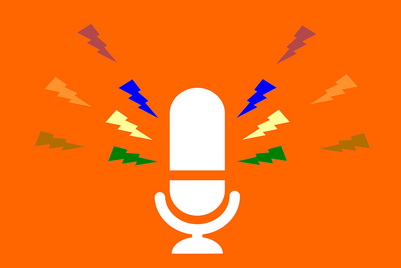
Spotify’s US$235 million acquisition of podcast hosting and ad platform Megaphone on Tuesday (November 10) further tightens its grip on the growing podcast industry.
Over the past two years, Spotify has spent millions of dollars to acquire its way into the podcast space, from production studio Gimlet, to podcast media network Parcast, to media company The Ringer. Spotify has also shelled out millions on licensing deals, most notably its $100 million exclusive agreement with Joe Rogan.
But Spotify’s ambitions go beyond owning and producing podcasts. While a majority of its revenue comes from subscriptions, Spotify has a large and growing programmatic advertising business that it wants to extend to its podcast content. In January, Spotify rolled out Streaming Ad Insertion (SAI), which allows advertisers to target audiences through live streams of Spotify original podcasts and better measure who they reached.
But Spotify has “way more advertiser demand for [SAI] than inventory to satisfy it,” said Jay Richman, head of global ads business and platform at Spotify. And Megaphone, which hosts and monetises podcasts by more than 20,000 publishers, satisfies that need for scale.
“The challenge [with SAI] in its current state is that it's premium, but niche,” Richman continued. “By acquiring Megaphone, we're able to bring scale.”
Spotify has partnered with Megaphone for years to host and monetise its original podcasts. But the acquisition will extend SAI’s targeting and measurement capabilities to publishers outside of Spotify’s network for the first time.
That could open the floodgates to new advertisers and “shrink the gap between time spent listening and ad spend coming into the space,” Richman said. Podcast advertising is projected to hit $1 billion in 2021, according to the IAB, but it has been slow to attract large consumer brands because of the lack of transparency around how audiences engage with their ads.
“A lot of folks enjoy listening to podcasts, but it's not a sustainable or healthy ecosystem in its current state,” Richman said. “We need to get more advertisers into the space.”
The tie-up is beneficial for podcast creators as well as brands because it will broaden the pie of advertisers available to monetise their content, Richman explained. “More monetisation flowing into the industry will shrink the gap between time spent listening and ad spend coming into the space, so we can fund more creators.”
But Megaphone’s clientele is mostly major brand advertisers, who are likely to funnel their budgets toward publishers they trust and further tip the scale toward well-funded players.



.jpg&h=334&w=500&q=100&v=20250320&c=1)
.jpg&h=334&w=500&q=100&v=20250320&c=1)
.jpg&h=334&w=500&q=100&v=20250320&c=1)


.jpg&h=334&w=500&q=100&v=20250320&c=1)


.jpg&h=334&w=500&q=100&v=20250320&c=1)


.jpg&h=268&w=401&q=100&v=20250320&c=1)

.jpg&h=268&w=401&q=100&v=20250320&c=1)
.png&h=268&w=401&q=100&v=20250320&c=1)
.jpg&h=268&w=401&q=100&v=20250320&c=1)
